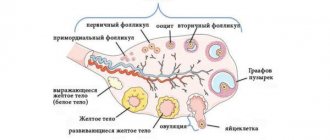Breast cancer in women is the most common form of malignant tumor. And today she is much younger.
The older a woman is, the more likely she is to develop breast damage. The highest mortality rate from this disease occurs in women aged 45–52 years.
Breast cancer can also develop in men, but this is rather an exception to the rule, since such pathology is extremely rare in them.
The main reason for the development of this disease is:
- bad ecology;
- constant stressful situations;
- increased radiation, poor quality food, which leads to changes in hormonal levels;
- heredity;
- in nulliparous women;
- with the development of concomitant diseases, these may be mastopathy and fibroadenoma;
- abortions;
- refusal to breastfeed;
- late pregnancy;
- after using contraception, for 10 years;
- obesity, especially during menopause;
- development of hypertension.
There are a lot of reasons why the disease occurs; they should be excluded whenever possible.
At the same time, it is necessary to constantly monitor your health even at the first symptoms, which are expressed in the form of:
- The appearance of compactions and nodules detected during self-diagnosis.
- A sharp increase in axillary lymph nodes, on the one hand, with the appearance of pain syndromes and discomfort.
- A change in the very shape of the mammary gland, while the skin becomes rougher, wrinkles, and dimples appear on it, and sometimes, poorly healing wounds.
- When a woman is not pregnant and is not breastfeeding, but fluid begins to appear from the nipple, it can be cloudy-whitish, yellowish, bloody, mixed with pus, and transparent.
How often can you do a breast ultrasound?
Ultrasound examination of the mammary glands is prescribed in the following cases:
- pain in the chest area, discharge from the nipples;
- suspicions of the development of tumors and neoplasms of various types;
- changes in size, shape, condition of the skin;
- hardening of the nipples;
- planning to conceive a child, pregnancy, breastfeeding period;
- inflammatory processes, injuries;
- control of hormonal and other therapy;
- enlarged lymph nodes in the axillary area, in the area under the collarbones;
- preparation for breast augmentation or reduction surgery.
Also, an ultrasound of the mammary glands is necessary when taking a puncture.
Ultrasound examination of the mammary glands is indicated for women:
- up to 30 years – 1-2 times a year;
- after 30 years – once every 12 months.
After 50 years, women can visit an ultrasound room once every 2 years. This is due to the fact that at this age hormonal levels begin to decline, which leads to changes in the breast area and female reproductive organs.
At risk of developing breast diseases are:
- patients aged menopause;
- nulliparous and old-time mothers;
- persons with poor heredity;
- female representatives with the presence of lumps in the mammary glands, changes in the shape and size of the breasts.
People at risk should visit a doctor and undergo ultrasound examinations more often than others.
Even if there are no prerequisites or dangerous symptoms, you should not ignore going to the doctor and regular medical examinations. According to statistics, many pathologies are detected in the early stages through preventive examinations, which increases the chance of a positive prognosis by 90%. The sooner the diagnosis is made, the faster the recovery will come.
Sorry, the requested page does not exist.
Nothing found for this request. Try using the search to find what you need!
What can be done?
- Use the search
- Go to the main page.
You may also be interested
in Scoliosis 0
Which doctor should I consult with scoliosis?
Signs At home, you can periodically examine your children and yourself for
Hernia 0
Pregnancy and inguinal hernia
What is a hernia? When a hernia occurs, a pathological protrusion appears on the body, which occurs due to
Injury 0
Handros severe pain in the neck and head
Methods of treatment Osteochondrosis of the cervical spine, symptoms and treatment should be considered comprehensively and
Osteoma and osteomyelitis 0
Who treats osteoporosis and which doctor
Which doctors should I go to? Osteoporosis can be treated by several specialists. Which doctor will take it?
Scoliosis 0
Therapeutic swimming for scoliosis
Scoliosis of the second degree Let us consider, as an example, what a treatment regimen might look like for the very initial
Joints 0
Intercostal neurosis (symptoms and treatment), neurosis of the chest, ribs
What is intercostal neuralgia? Intercostal neuralgia is not a disease, but a symptom characteristic of
Fracture 0
For fractures of the limb bones, a splint is applied
Why are splints applied for fractures? A splint is applied to fix and hold a broken bone, since
Spondylosis 0
Pain in the neck muscles when turning the head
Why does pain occur when turning your head? There are several diseases that cause pain
Bursitis 0
Mydocalm for the trigeminal nerve
The correct approach to treatment When diagnosing, the doctor must determine the stage of the pathological process. Case
Scoliosis 0
Scoliosis 10 degrees treatment restriction for admission to the Ministry of Internal Affairs -
Army. Will scoliosis of the 1st degree of the back be taken into the army? Question: I found out that law enforcement agencies
Scoliosis 0
We train at home. How to straighten your back: exercises for scoliosis at home.
Qualified diagnosis is the key to successful treatment Before choosing the most effective correction method
Ligaments and muscles 0
Damage to the patellar ligament, treatment and rehabilitation
ANATOMY At the front of the joint is the patella (kneecap). Patella and quadriceps femoris
When is a breast ultrasound prescribed?
Ultrasound of the mammary glands is performed for both diagnostic and preventive purposes.
Ultrasound diagnostics is recommended in the following cases:
- To identify tumors, cysts and other neoplasms that were detected during other examinations.
- When the shape and condition of the skin of the breast are changed.
- For painful sensations in the chest area, hardening of the nipples.
- If fluid is released from the nipples.
- To check the condition of the glands after inflammatory processes and injuries.
- With enlarged lymph nodes under the arms, above and below the collarbones.
- To check a silicone prosthesis in the postoperative period (after breast augmentation)
- When the breasts have increased in size.
- For lumps detected during breast self-examination.
- When planning pregnancy, during pregnancy and during breastfeeding.
In addition, ultrasound diagnostics and mammography are recommended for all women over thirty years of age annually. Before this age, it is recommended to carry out the ultrasound method. After fifty years, it is advisable to do the study every six months.
Also, diagnosis is usually prescribed for patients who have a high risk of developing a malignant tumor in the breast. Another indication for this research method is contraindications or impossibility of performing MRI.
This method allows you to assess the condition of the female organ and identify pathological processes occurring in the early stages. In some cases, diagnosis is also prescribed for men with suspected gynecomastia. One type of ultrasound examination is Dopplerography, which allows you to evaluate blood flow in blood vessels (veins and arteries).
Ultrasound is a non-invasive, safe and informative examination method
Ultrasound diagnostics as a research method has many advantages.
These advantages include:
- Safety and harmlessness of the study due to the absence of ionizing radiation.
- Minimum list of contraindications.
- Non-invasiveness of the method.
- Availability of diagnostics.
- Obtaining accurate and reliable results.
- High information content.
- Possibility of conducting research for pregnant women and women during breastfeeding.
- Painless manipulation.
- Receiving images in real time.
- Possibility of identifying the disease in the early stages.
- No adverse reactions after the procedure.
- During diagnosis, the condition of adjacent lymph nodes and blood vessels is also examined.
- Detection of changes in dense breasts.
This study is used as a preventive examination, as well as in the diagnosis of various pathological processes, including breast cancer. Breast ultrasound can determine the structure of the formation (dense, mixed and liquid). This helps to provide an additional assessment of the identified pathology.
The list of disadvantages of this method is minimal. These include only the relatively expensive cost of the procedure. In addition, to assess the condition of intraductal formation, mammography is recommended rather than ultrasound diagnostics. Therefore, some types of oncology are not detected by ultrasound.
Ultrasound before and after mammoplasty
Before proceeding with plastic surgery, the patient needs to undergo a comprehensive examination of the body. Including ultrasound examination of the mammary glands. This procedure is necessary for the following reasons:
- Allows you to identify structural features of the mammary glands, this will greatly facilitate the development of surgical tactics
- Possible pathological processes and other contraindications to surgery are excluded
- Nearby tissues and lymph nodes are examined
- If any abnormality is detected, the operation is postponed until the pathology is eliminated.
As for the postoperative period, ultrasound of the mammary glands and implants is carried out routinely every year. This is necessary for the following purposes:
- Inspection, localization and structure of the implant
- Identification of possible neoplasms and complications after surgery
- Determination of the inflammatory process if a woman has any complaints
Timely preventive diagnosis allows you to avoid serious health problems.
What does the study determine?
Ultrasound examination determines:
- disturbances in tissue structure;
- cysts, lymphangiomas, neoplasms;
- blood flow in the tumor area in real time;
- condition of the lymph nodes;
- early stage breast cancer;
- mastopathy, mastitis, fibroadenoma;
- development of infection after injury, plastic surgery, or previous illnesses.
A positive examination result will show that the gland ducts are not dilated and are visible along the entire perimeter with expansion in the area adjacent to the nipples; the organ has glandular tissue. After 40 years, some acceptable age-related changes are possible. In this case, the echogenicity should be uniform, and the glandular and fatty lobules should be without deformation. A healthy breast should have smooth, clean skin without inflammatory processes, spots, or thickening.
What is better to do: ultrasound or mammography
Every woman must undergo a breast examination. It comes down to palpation examination, ultrasound and mammography.
The question “which is better: ultrasound or mammography” cannot be answered unequivocally. Which of the two methods is preferable depends on a number of factors, these include:
• Age. • Hereditary predisposition. • Discretion of the attending physician. • Pregnancy. • Implants. • How often should the examination be performed.
Ultrasound of the mammary glands is best done for girls and women under 35-40 years of age.
The fact is that in young girls, especially those who have not given birth, the breast tissue is quite dense, and the pathology may not be visualized on mammograms. In addition, ultrasound of the mammary glands is a more harmless method of examination, since during radiography the woman receives a small dose of radiation.
Mammography is recommended for women aged 40 and older.
In general, we note that these two methods of diagnostic instrumental examination do not contradict each other, but rather complement each other.
Mammography is the “gold standard” in diagnosing breast tumors. The frequency of visits to identify possible tumors is determined by the doctor, but if we talk about preventive diagnostics in general terms, a woman undergoes an ultrasound of the mammary glands every year, and mammography should be performed every 2 years.
Women at risk are screened more often.
On what day of the cycle is an ultrasound performed?
The reliability of the results is affected by the day of the menstrual cycle
It is recommended that women after thirty years of age undergo this diagnosis annually as a preventive examination. Also, if oncology is suspected, a specialist performs a puncture under ultrasound control.
Ultrasound of the mammary glands should be performed in case of clarification of the diagnosis, which was obtained by mammography.
To ensure more accurate results, experts advise women to undergo the procedure depending on their menstrual cycle. Therefore, the best period for this is considered to be the first half, namely from the fifth to tenth day of the cycle.
In some sources you can find information that the best time for passing is considered to be from the eighth to the fourteenth day. Thus, diagnostics can be carried out from the fifth to the fourteenth day of the menstrual cycle. This feature is explained by the fact that during this period the woman’s hormonal state is stable.
When a woman is taking hormonal contraception or going through menopause, an ultrasound examination can be performed on any day.
The procedure for examining the condition of the mammary glands using ultrasound
No special preparation is required for breast examination. However, experts still give some recommendations on how to prepare for diagnosis.
Features include the following nuances:
- The woman must inform the specialist about when the first day of menstruation was, so that the doctor determines the period of the menstrual cycle at the time of diagnosis.
- There are no such restrictions regarding the consumption of food and drinks before the study.
- Before the procedure, the doctor assesses the condition of the mammary glands using examination and palpation.
- It is recommended to undergo hormone tests before breast ultrasound.
- It is important to take a disposable towel with you to the procedure. It will be useful for wiping the hydrogel from the mammary glands after the diagnosis.
- It will be better if a woman comes to the study in comfortable clothes. This will save time spent undressing.
- All jewelry should be removed from the neck.
- Pregnant women and nursing mothers must have permission from a specialist to conduct breast diagnostics.
- Some diagnostic centers provide special white clothing and shoe covers for ultrasound examinations.
To carry out the procedure, a woman needs to bare her breasts (undress to the waist) and lie down on the couch. Your hands should be thrown behind your head. Using a special hydrogel for better conductivity, an ultrasound sensor is passed through all parts of the mammary glands.
Using high-frequency waves, an image of the internal state of the mammary glands is reproduced on the monitor screen, namely the presence or absence of tumor processes and cysts, and the structure of the breast tissue. The ultrasound machine can show two-dimensional and three-dimensional images. Meanwhile, the doctor describes the result and records the main parameters of the mammary glands.
After performing the procedure, the woman wipes her mammary glands with a towel, and while she is getting dressed, the specialist interprets the results.
Purpose of ultrasound
The doctor, with the help of the woman, determines on which day of the cycle to do an ultrasound of the mammary glands, since for a particular woman such days are strictly individual, but the doctor always knows when it is best to do an ultrasound. According to medical opinion, it should be diagnosed in the first half of the menstrual cycle, this will be 8 - 10 days.
You can calculate the time for an ultrasound examination not only by days, but also by the level of estrogen in a woman’s blood.
When the menstrual cycle lasts for 28 days, an ultrasound is recommended to be performed on days 6-12, and with a longer cycle, an ultrasound can be performed on days 8-14.
On such days, the entire breast tissue changes less, while all the alveoli close, the ducts are restored, and the stroma of the glands becomes denser.
Of course, you can do an ultrasound on one of the specified days. But it is best to decide on the day when you need to do an ultrasound after a blood test is performed to obtain data on the amount of estrogen.
Tests should be carried out on the third day of the cycle, which makes it possible to find out the dynamics of estrogen formation and the development of hormonal levels.
However, an ultrasound should not be done immediately after the end of menstruation; you need to wait six days until the background decreases a little and this period of time is the most suitable when to do an ultrasound.
After an ultrasound, if the time of decrease in ovulation is correctly established, by creating an image of the entire internal structure of the mammary gland, an accurate diagnosis is determined.
The influence of the menstrual cycle on the examination
The timing for a routine examination and when it is necessary to diagnose a specific disease is slightly different. To obtain an informative, accurate examination result, it is necessary to choose a period when the body is in a stable hormonal state.
Shortly before the start of the menstrual cycle and during “critical” days, serious changes occur in the female body that directly affect the indicators of the mammary glands:
- compression of the milk ducts;
- swelling of breast tissue;
- expansion of lobules.
All this negatively affects the informativeness of the diagnosis. The doctor cannot thoroughly see the areas of the object being studied. If the examination is not urgent, it is best to choose the right time for the ultrasound together with your doctor.
It is recommended to conduct the examination after the end of the menstrual cycle. The optimal period is before ovulation:
- alveoli are reduced;
- stromal tissue is sufficiently compacted;
- milk ducts are narrowed.
The calculation of the day of the study depends on the duration of menstruation. For example, with a 28-day cycle, ovulation occurs on average on days 12-14. In this case, ultrasound of the mammary glands in women is best done on days 5-7 of the cycle. With shorter indicators, the period for examination decreases and vice versa.
After this, the hormonal background changes, which is aimed at preparing the mammary glands for a possible pregnancy. Blood supply to the alveoli increases, swelling develops. The breasts become enlarged and do not allow for an accurate diagnosis, since it is difficult to determine even pronounced pathological changes.
Each appointed period of a diagnostic event has certain characteristics. An examination in the second half of the cycle helps to collect the necessary amount of information for hormonal disorders. Diagnosis is carried out immediately after ovulation, without delaying until the onset of premenstrual syndrome.
For unstable periods, which most often indicate gynecological diseases and deviations from the norm, hormone tests are prescribed, which will help to accurately calculate the timing of an ultrasound.
Pregnant, lactating and menopausal women, if there are no signs of the menstrual cycle, can undergo an ultrasound examination at any convenient time. The same applies to patients on hormone therapy. During treatment, hormonal levels stabilize and do not interfere with diagnostics.
Best day of the cycle for breast examination
It is necessary to examine the mammary glands during the period of “hormonal rest”, when the ducts of the organ are narrowed. This increases the accuracy of the procedure. You can be examined using ultrasound at any time, but from 5 to 12 days it is easier to see formations. This is an average period; the exact date will be determined by the gynecologist, depending on the length of the menstrual cycle.
When should you do an ultrasound?
- with a normal cycle (28 days), the best day for an ultrasound procedure is the 7th day after the complete cessation of menstruation, even if the periods were scantier than usual and lasted only 3 days, it is better to take a pause, as with the usual duration of bleeding;
- in case of an extended cycle (35 days or more) or prolongation of the normal cycle, you must go to an ultrasound diagnostician on the 10th day;
- with a short cycle (21 days) and bleeding duration of up to 7 days, it is better to time the procedure to coincide with the 5th day.
If you have reached adulthood and bleeding has become spontaneous, irregular and short-term, there is no point in using the recommendations given. During the period of menopause and post-menopause, ultrasound is done arbitrarily; for sure, it no longer matters on what day to be examined.
Ultrasound during menstruation or without taking into account the cycle
In emergency cases, ultrasound is performed without taking into account the cycle
In some cases, emergency diagnosis is necessary, which does not allow waiting for the critical days to end. This urgency is relevant in the following cases:
- suspicion of a cyst;
- severe swelling;
- areas with hyperemia of the skin in the chest area appeared;
- monitoring the dynamics of cyst enlargement/decrease;
- mammography revealed an atypical condition of the mammary gland;
- determination of the nature and nature of breast papillomas;
- assessment of the detected neoplasm.
Also, ultrasound examination during menstruation is carried out in the following situations:
- after installation of breast implants and other surgical interventions;
- selection of hormonal drugs and contraceptives;
- suspicion of postpartum development of mastitis;
- the appearance of gynecological abnormalities against the background of ovarian dysfunction;
- receiving a chest injury.
Indications for ultrasound of the mammary glands
Due to the fact that breast cancer has become diagnosed more often, doctors (gynecologists and mammologists) recommend that all women over 30–35 years old undergo an annual ultrasound examination.
An ultrasound of the mammary glands outside of a routine examination is necessary in the following cases:
- Chest tenderness;
- Nipple discharge;
- Changes in the volume, contour and structure of the mammary gland;
- Detection of a tumor-like formation in the breast;
- Signs of inflammation of the soft tissues of the chest (pain, redness, local hyperthermia);
- Chest trauma (blunt chest trauma, compression);
- Gynecological pathology associated with excessive production of the hormone prolactin;
- Control after installation of implants and organ prostheses;
- Mastitis caused by breastfeeding;
- Confirmation of the diagnosis made through other types of research;
- Monitoring treatment for breast disease.
Features of the event
Ultrasound examination of the mammary glands does not require special preparation, except for choosing a favorable day for the procedure. This is a non-invasive, accessible, painless diagnostic method.
Event algorithm:
- the woman is exposed from above to the waist, allowing unhindered access to the mammary glands;
- on the couch assumes a supine position;
- the specialist applies a gel to the chest to improve the conductivity of ultrasonic waves;
- research is carried out using a sensor;
- Healthy areas are initially examined, with a smooth transition to pathological areas where more thorough diagnosis is required;
- the received informative signals are transmitted to the monitor from which the doctor reads the information.
For a healthy patient, the procedure takes about 20 minutes. When taking a biopsy, mastopathy, abscess – 45 min.
For research, a linear sensor of 8-15 MHz is mainly used. The scanner is optimal for examining large breasts and assessing the deep structures of the organ. When examining the middle segment, the patient is placed on her back with her arm behind her head. Visualization of the lateral sections is carried out on the opposite side with the arm behind the head.
Dopplerography of the breast
The technique analyzes the blood supply to the breast and depends on:
- hormonal status;
- patient's age;
- severity of sclerosis of arterioles, parenchymal arteries;
- individual characteristics;
- peripheral blood pressure.
Based on the results of an ultrasound examination, you can evaluate:
- characteristics, type of Doppler curve;
- number of vessels;
- spectral Doppler parameters;
- number, size of color manifestations in one neoplasm.
The diagnosis also shows the symmetry of blood flow in healthy and pathological areas of the mammary gland. Ultrasound determines signs of malignant processes.
Benefits of breast ultrasound examination
The main advantages of breast ultrasound include the following factors:
- absence of pain and discomfort;
- full assessment of blood flow and lymph nodes in the examination area;
- availability of the method;
- safety;
- diagnostics is permitted for pregnant and lactating women;
- the ability to view tissues in different projections;
- clear definition of soft tissue formations - mastopathy, cysts;
- promptly indicates the presence of metastases;
- ability to detect neoplasms with dimensions from 0.5 cm.











